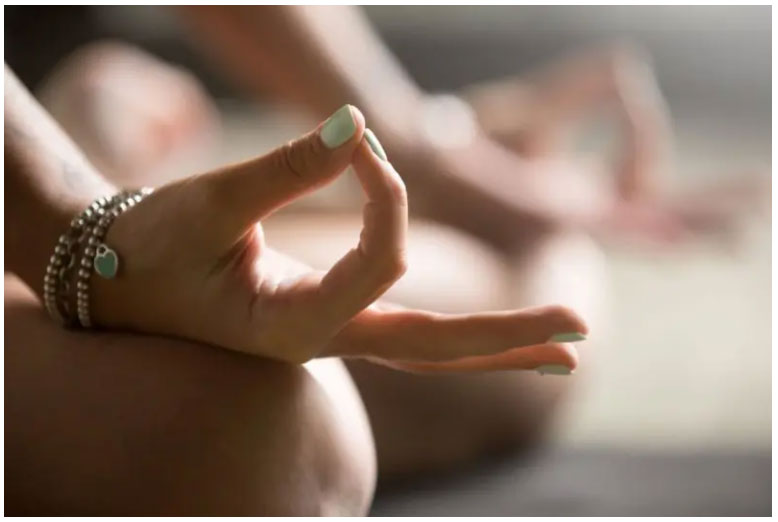Finger Yoga
There is an expression that often comes up: "our life is in our hands". The hands are thus perceived as forming a whole and represent the seat of life. The mudras of the hands refer to this expression full of meaning and propose to practice a true "yoga of the fingers". Each finger has its own energy which, according to a particular position, will be activated and collaborate with the other energies of the body.
What is a mudra?
Mudra is a compound term from Sanskrit. "Mud" means joy or happiness and "ra" means to trigger or dissolve. Mudras are truly a yoga of the hands and, if practiced regularly, will not only allow us to circulate more energy in our lives, but will also free our body and mind from daily tensions, while helping us to find solutions to specific problems.
These gestures are considered sacred and are performed according to very codified positions that must not be deviated from. Symbols are indeed very powerful in this type of yoga. Certain positions, in addition to using the hands and especially the fingers, will require a certain positioning of the tongue, the body or the gaze. The energy will be more channeled, allowing the expression of various inner and spiritual states. In true finger yoga, mudras are found in many Hindu traditions, especially dances or other spiritual activities such as meditation and prayer.
Mudras are also very present in traditional Indian medicine, because the latter considers that the fingers, hands or feet, are in direct relation with our vital organs. Thus, traditional medicine will look for various points of stimulation of the organs, with the aim of harmonizing our different chakras. Let us note that Chinese medicine also considers the fingers as the starting point of the energy that passes through the body to the organs.
The elements constituting a hand
To begin, know that our five fingers are in direct relation with one of the five elements present in nature. For example:
• The thumb corresponds to fire (agni in Sanskrit) and helps to balance the various energies of the body. It is therefore particularly important in the practice of mudras.
• The index finger corresponds to air (vayu) and will help to improve the activity of our mind, stimulating our ability to think and create.
• The middle finger corresponds to the ether (akasha), and allows us to live in harmony with the spirit world.
• The ring finger corresponds to the earth (prithvi), and allows everyone to defend what belongs to them on this earth.
• Finally, the little finger corresponds to water (jala), and stimulates our ability to exchange with others, to interact in a community and to foster relationships.
You will have understood it, when we create combinations and postures with our fingers, we connect these different elements and make them collaborate to bring us closer to a state of plenitude.
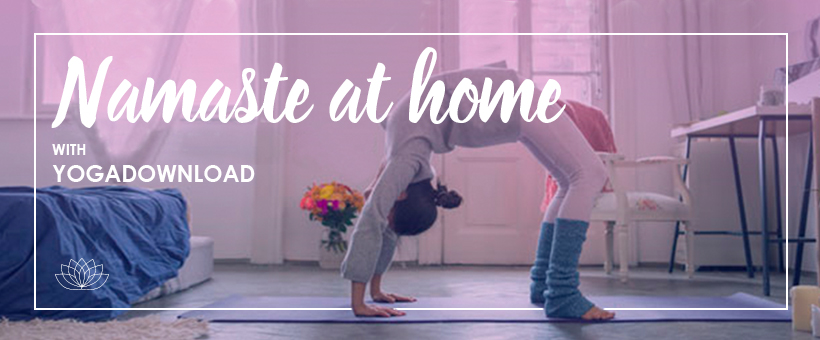
A very special meaning
Various religious and spiritual currents start from the premise that our body is filled with energy that circulates freely through multiple channels. These channels, also called "nadis", can be found in our physiological as well as psychological and spiritual functions. Many of these channels end at the surfaces of the hands and feet. Thus, the work of the fingers will allow us to harmonize our body, both physically and psychologically. And it will also allow us to better control our emotions or our concentration, and to harmonize our body with the rest of the Universe.
When we start practicing mudras, we create many forms. These forms, just like the different yoga postures, will generate energy that will then circulate in our body, improving our chakras and our various ailments. And for good reason, the hand is a direct source of the creative energy that circulates in the body: the palm of the hand is a receiver of this energy, while the fingers are transmitters. When practicing a mudra, two fingers are joined together, and the corresponding energy is blocked in a specific part of the body and mind.
Over time, mudras develop under the guidance of several Indian master yogis or spiritual men. Thus, today there are several dozen of them, whereas there were only nine at the time. Each mudra therefore has particularly beneficial effects on the body and mind by simply stimulating reflex zones.
Benefits of finger yoga
According to Chinese medicine, many meridians start or end at the fingers. Thus, the different positions and gestures induced by the Mudras can generate various benefits. What can you improve with mudras?
• Dental and temporomandibular joint pain
• Headaches and migraines
• Arthrosic pain of the whole body
• Cramps of various muscles
• Pain in the spine, both lumbar and cervical
• Menstrual pain and pain in the male and female genital and urinary tract
• Stress
• Vision and ENT problems
• Respiratory diseases
• Digestive disorders
• Allergies
• Memory and concentration problems
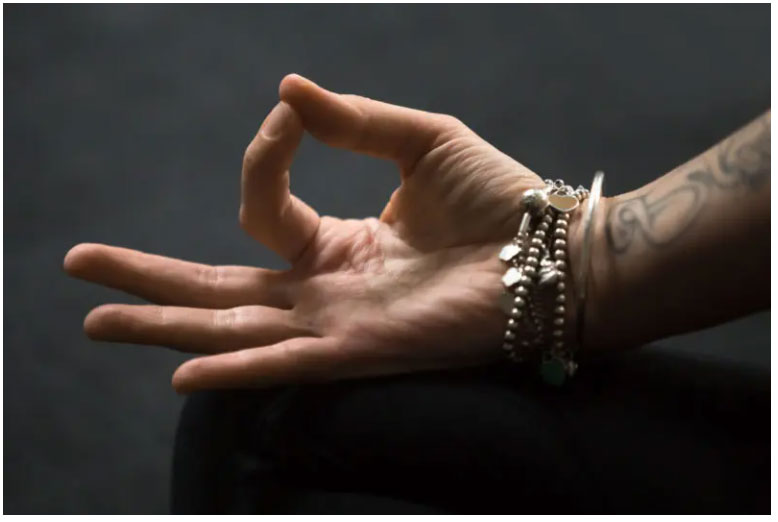
How to practice mudras?
Of course, it's better to select just one mudra than several at the same time. You can then start practicing it regularly and daily for twenty-one days and choose another one afterwards. Choose the one that makes the most sense for you first.
You will have to devote a time to it that will be specific to each of you. Nevertheless, something like three times a day, say morning, noon and evening, should bring you visible results. You can perform mudras while standing, lying down or sitting. They can even be done while walking! The advantage of this technique is that you can do it at any time of the day, which allows you to optimize your time to the maximum, especially if you are always very busy. The best is to practice your mudras for seven, fourteen, or twenty-one breaths. Each breath will be done by breathing deeply through your nose, and the pressure of your fingers should be gentle, not too much pressure should be applied. The important thing is also to remain as relaxed as possible during the practice, you should not tense, tense, or tire during the posture.
The technique will be done in two steps: a first preparation time in movement which will allow to gather the different energies and which will last approximately one minute, and a second time which corresponds to the mudra itself, the latter being motionless. Thus, the simplicity of this technique allows you to take advantage of it during moments when you have nothing to do, or even moments that can be stressful or unpleasant, such as traffic jams or a medical visit. This will allow you to concentrate your energies in order to relax and unwind. Although it is preferable to be relaxed and in a calm state when practicing mudras, they can be particularly beneficial in the above-mentioned situations, with the aim of relaxing and detaching yourself from the harmful effects encountered in daily life.
You will be able to feel the effects of the technique immediately or after some time of practice. Observe your reactions and emotions carefully. More often than not, a feeling of overall warmth appears: more discomfort, calmer breathing, a clearer and more alert mind. Note that it is possible to feel the opposite of these sensations at first: you will then be tired, cold, etc. However, relaxation will eventually take over and take hold for a long time.
Some mudras explained
Atmanjali mudra
Both hands join together against the chest to form a whole.
This mudra connects the spiritual part of our soul to the material part. It brings happiness and love. It is also a gesture of thanks and greeting.
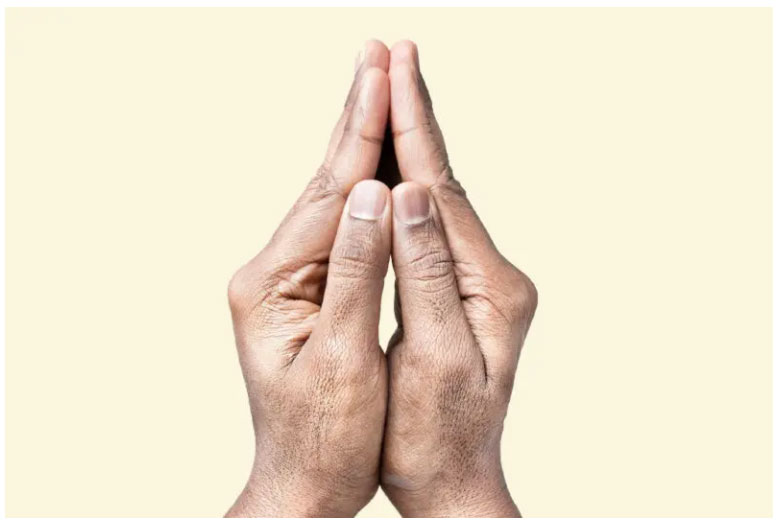
Gyan or Jnana mudra and Chin mudra
The thumb joins with the forefinger to form an unbreakable circle from which the energy cannot escape.
This mudra allows the union between man and the divine. Indeed the thumb represents the universal soul and the index finger represents the individual soul.
It is also a gesture of concentration and stimulation of the mind.
It is possible to turn the palm of the hand towards the sky, which allows the understanding of the Universe (Gyan or Jnana mudra). It is also possible to turn the palm downwards, towards the earth, which allows the understanding of the self (chin mudra).
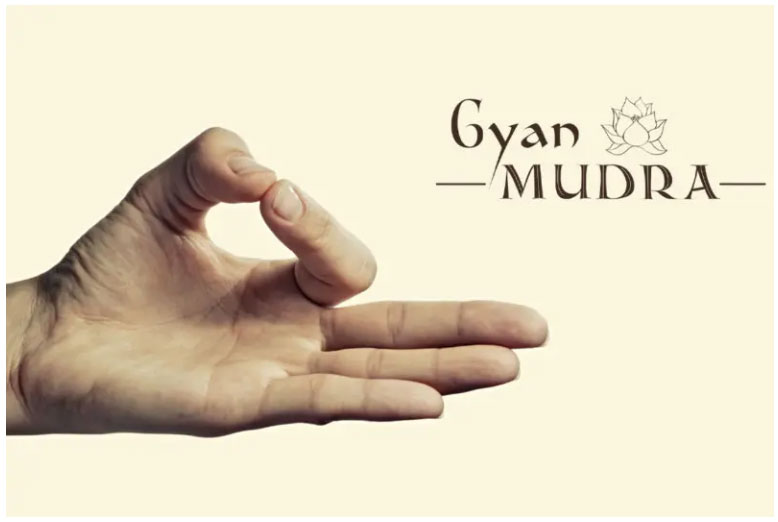
Dhyana mudra
The two thumbs join together while the rest of the hands overlap to form a spiritual circle that circulates energy and access to the understanding of the universal soul.
The circle also tends to represent an empty dome, allowing everyone to meditate on the emptiness.
This mudra is often associated with Buddha.
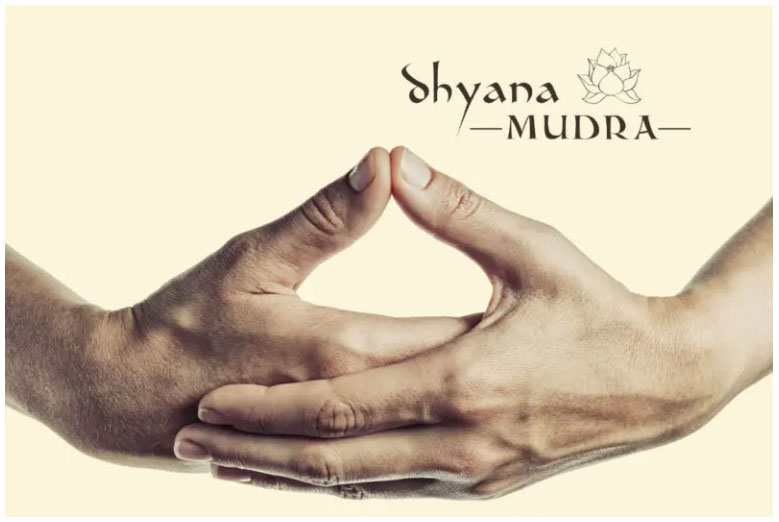
Prana mudra
The index and middle fingers remain taut, while the other three fingers come together to make a connection. In this way fire and earth are associated and allow to increase and improve the circulation of vital energy. It helps to energize the body and mind, and to regulate certain eye or sleep disorders.
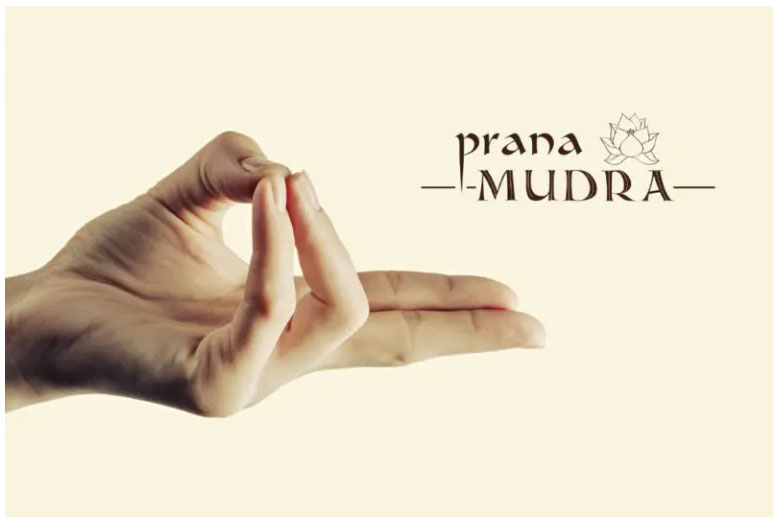
Shunya or Shuni mudra
The middle finger and thumb join together, while the other fingers remain taut.
This mudra will essentially allow you to find rest and calm. It is particularly used during meditation.
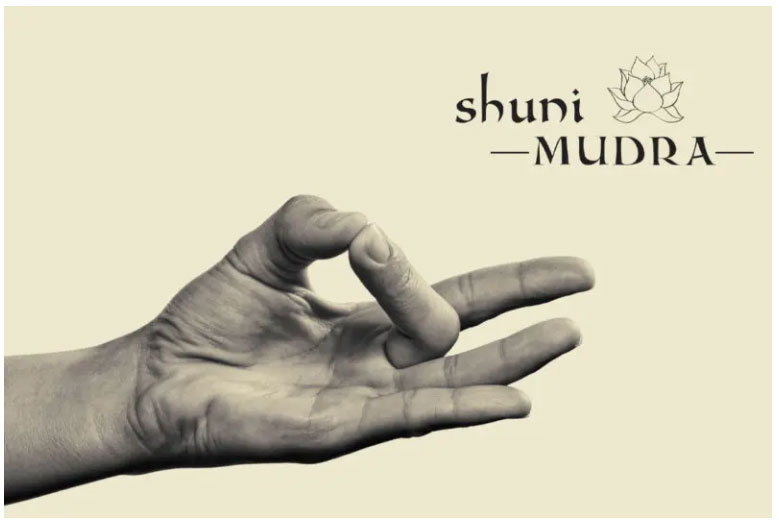
Shankh mudra
The right thumb is trapped in the left fist, while the left thumb is in contact with the fingers of the right hand.
This mudra is widely used to improve voice and speech. It also cures diseases and inflammations of the throat. You can practice it by singing OM.
Surya or Muladhara or Prithvi mudra
The thumb crushes the second phalanx of the ring finger, it dominates it and activates the energy of the sun. It thus stimulates physical strength and generates a certain healthy weight loss that is beneficial to the body. It helps to strengthen nails, hair, muscles, bones, etc..
The solar plexus should be particularly observed during the practice of this mudra.
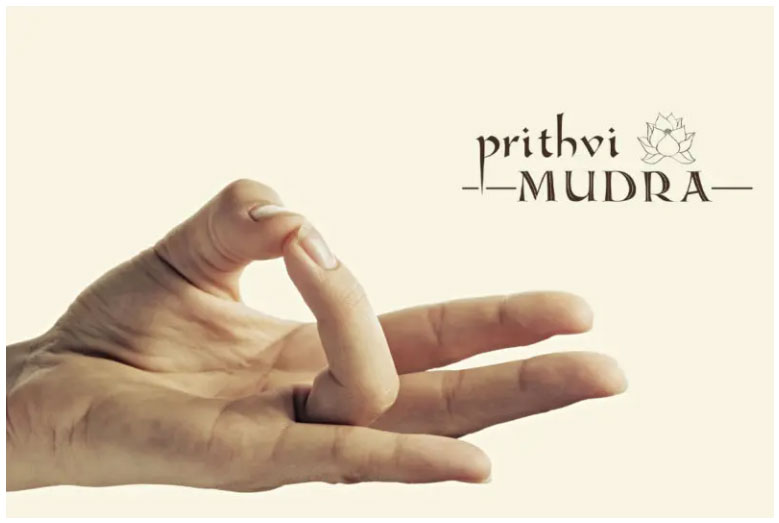
Yoni mudra
The thumbs join together, as do the other fingers that are stretched out. This mudra represents a uterus and symbolizes the origin of life and fertility. Pregnant women should use it during pregnancy. It induces stability and concentration.
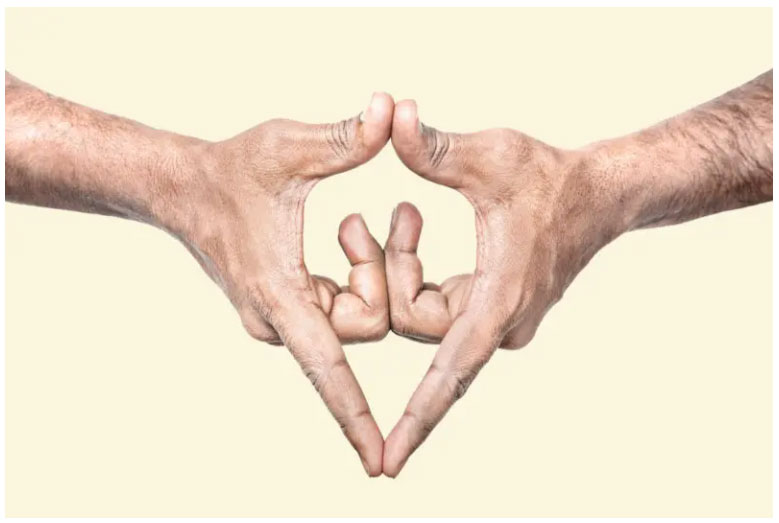
Ganesha mudra
Hands are placed at chest level, fingers intertwined. Each hand pulls in an opposite direction. This mudra works on respiratory and cardiac problems.
Ksepana mudra
The index fingers join together, the thumbs cross, while the other fingers intertwine. This mudra helps to relieve stress and detoxify the body by removing negative energies from the body.
Note that it should not be practiced for a long time, as the beneficial energies can also eventually leave the body.
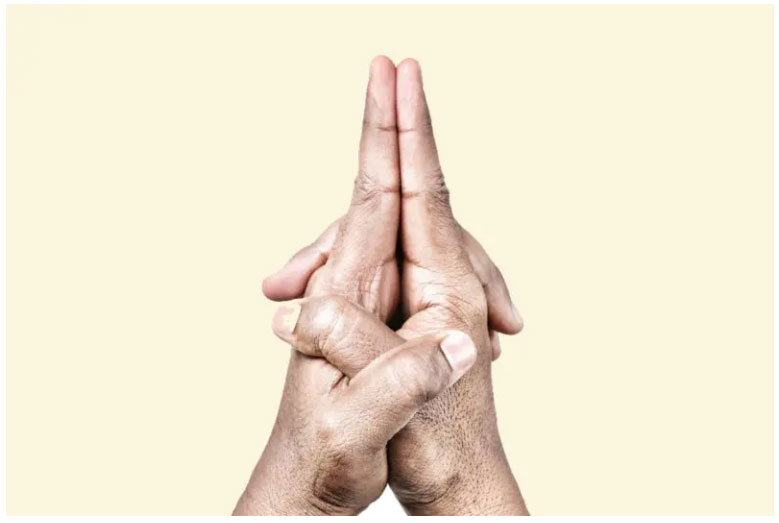
Lotus or Padma mudra
Thumbs and fingers are joined, closed, and finally open like a lotus flower. This mudra symbolizes the opening of the body and mind to nature and the divine.
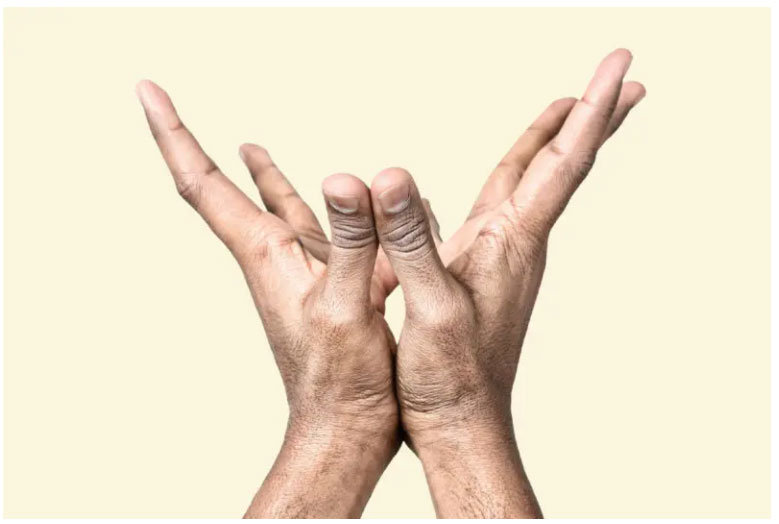
Hakini mudra
The pulps of the five fingers are joined together and form a whole, divided into equal parts. This is the mudra of concentration and reflection. Exchanges between the two cerebral hemispheres are facilitated.
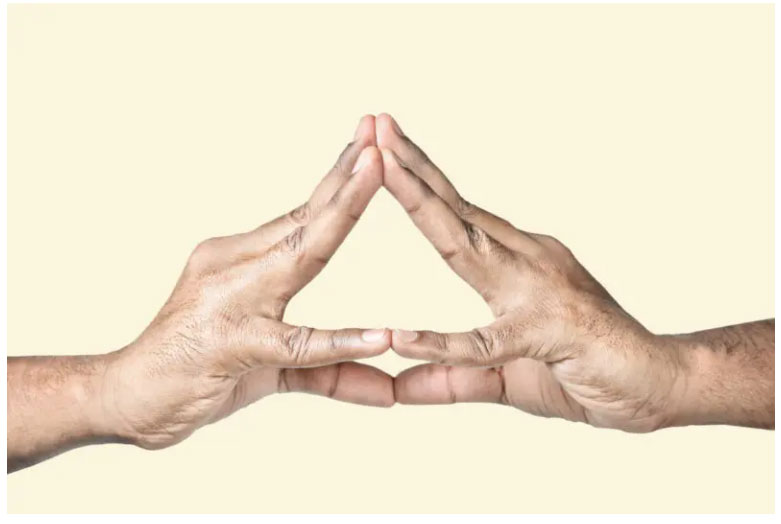
Conclusion on mudras
The practice of mudras is beneficial in every way. Once you have chosen one, no doubt you will be impatient to move on to the next one, as they can provoke spectacular sensations and effects on your body.
Remember, just like yoga, you will need to practice these exercises regularly for them to be effective.
Have you ever heard of this technique before? Do you find it easy to practice?


